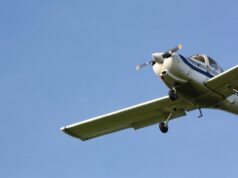
Various scenarios to enhance real-life flying
I started my flight training in the Chicagoland area, and for about three years, did all of my flying out of the same two airports. After spending a while training out of Chicago Executive Airport, which is so close to O’Hare that there’s a cutout in the Class B surface area to make room for Executive’s Class D. I spent a year or so training at Waukegan National Airport, just a few miles south of Illinois’ border with Wisconsin. Training at these airports provided me with great learning experience. As a young student pilot hopping in the cockpit for the first time, training at Executive especially helped me learn how to manage what felt like incredibly busy airspace without being overwhelmed. Waukegan had its benefits too, giving me more flexibility to meet the exact training requirements I needed for each checkride.
However, these two airports are incredibly close to each other – roughly 10 minutes of flying time from each other, even at the relatively-slow speeds of a Cessna Skyhawk. So, besides the differences between the two airports themselves, there was no practical difference between training at them. I was using the same practice area, managed the same airspace, had the same traffic volume, and visited the same secondary airports for pattern work. After a while, I could feel myself growing out of these airports that circumstance had placed me in.
I was lucky enough to move to Florida for a couple months to complete my CFI training. So far, in the time I have been training here, I have been exposed to a new airspace layout, new training techniques, and a completely different traffic volume. Flying into different airports that I’m not intimately familiar with, remembering just how critical traffic scans are, managing new airspace (including Class B and Class C airspaces remarkably close to my training airport), and being exposed to a different training method at a new flight school have helped flex my flying muscles and fine-tune my techniques in a way I might not have been able to had I stayed in Chicago.
Being challenged does wonders on focus and retention. There is a reason that complacency can be such a difficult nut to crack. When we get used to always flying in the same situations and in the same areas, we let our guards down. Being able to be in a new environment has helped me break away from that and has required that I reset my focus on something new.
But, moving hours and hours away does not need to be the only way to push yourself. Getting a new license or rating, learning to fly a new aircraft, using a new avionics suite, or even learning how to be a proficient pilot in the right seat instead of the left (or, if applicable, the front seat/back seat) can all be effective ways of giving yourself a new experience to grow your skills and keep your brain active. Plus, learning in new environments does not always demand a move to a new state. Flying a long cross country to a new airport with some friends could be a good way to experience a new area, as can flying with a new instructor for a while, or even training a maneuver that you haven’t flown in a while, perhaps one that you didn’t care for during initial training.
Even changing airports is a good way to challenge yourself. If you cannot move around, challenge yourself to become more familiar with some of the airports in your area. Visit a new airport for landing practice instead of the few that you prefer, and fly there often. Make intentional stops at the FBO to become more familiar with the taxiway layout and standard procedures at the airport.
If you cannot pay much, there are also low-cost ways to expand your knowledge and skills. Many airports have chapters of the Civil Air Patrol or Experimental Aircraft Association. These organizations offer regular, informational, and community events; and the Civil Air Patrol will even give training in its fleet at a reduced rate. Community events, such as fly-ins and pancake breakfasts, give pilots the opportunity to meet with others and join in conversations to learn from others’ experiences.Think of enjoyable and creative ways to push yourself. Consider making progress towards a big goal that you have yet to undertake. Could that be renting or buying a faster, more advanced aircraft or adding a new category or class rating to your certificate? There are plenty of ways to push yourself out of your comfort zone, whether big or small. Ultimately, these methods will help you improve your airmanship and enhance your decision-making skills.




















































